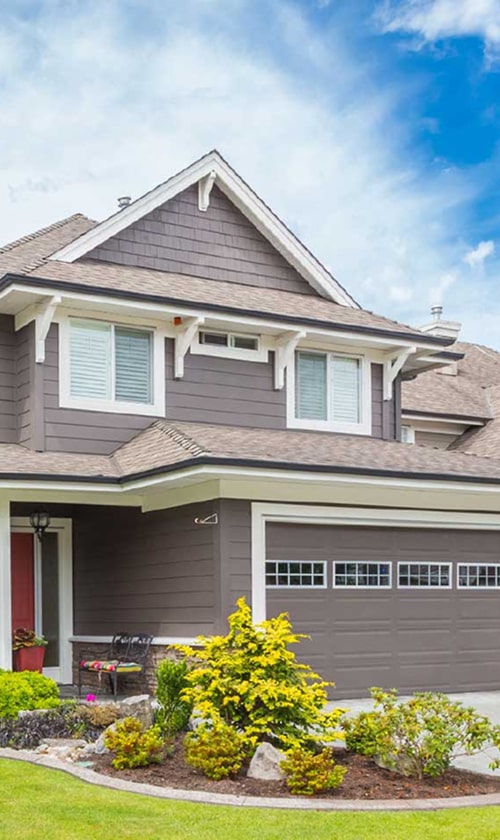Understanding Furnace Sizing and BTU Requirements

Accurate furnace sizing is crucial for efficiency and comfort. We need to calculate BTU requirements based on the size and layout of the home, ensuring the furnace meets the heating needs without waste.
Basics of BTU and Heating Capacity
BTU, or British Thermal Unit, is a measurement of heat energy. It indicates how much heat a furnace can produce in an hour. The heating capacity we need depends on the total square footage of our home.
A furnace with high BTU output is effective for large spaces, while a smaller one might suit a compact area. We must ensure our furnace matches the heating requirements to avoid overheating or insufficient warmth.
Importance of Accurate Load Calculation
Proper load calculation helps us determine the correct furnace size. We use a Manual J load calculation to figure out heating requirements. This considers factors like square footage, insulation quality, and climate.
An accurate load calculation ensures our furnace operates efficiently. Using a furnace BTU calculator or furnace size calculator aids in precision. Our goal is a comfortable home without constant thermostat adjustments or energy waste.
Factors Affecting Furnace Size and BTU Calculations
Several factors influence our furnace sizing and BTU calculations. Climate plays a significant role, as homes in cold areas may need higher heating capacities. Insulation quality affects how much heat the home retains, impacting BTU needs.
Heat loss through windows, doors, and walls also matters. We must account for this to prevent underestimating the BTU requirements. Additionally, considering existing heating systems, like a heat pump, might change the calculations.
We aim to balance all these factors to choose a furnace that fits our home’s specific needs.
Selecting the Right Gas Furnace for Your Climate Zone
When choosing a gas furnace, it is crucial to match the furnace’s capacity with the climate zone of your home. Our main goal is to ensure energy efficiency and proper heating. Understanding climate zone specs and adjusting the BTU size are key aspects.
Climate Zone Specifications for Furnace Sizing
Different climate zones require distinct heating capacities. These zones are categorized by average outdoor temperatures. Homes in warmer zones need less heating and smaller furnaces, while colder zones require larger units to keep interiors comfortable.
Insulation and home energy efficiency also impact furnace size. Improved insulation can reduce the need for overly large furnaces. We should evaluate the insulation levels and window quality to ensure that the furnace provides just the right amount of heat without wasting energy. Taking these factors into account helps us choose the right size and capacity for our circumstances.
Adjusting BTU Size for Climate Efficiency
BTU, or British Thermal Unit, is vital for measuring furnace capacity. Selecting the right BTU involves understanding both the heating factor of the home and the efficiency rating of the furnace. A furnace with the correct BTU size will be efficient in energy use and maintain comfortable temperatures.
In warmer areas, a lower BTU might be enough. In contrast, cooler climates demand higher BTUs to account for lower average temperatures. By fine-tuning the BTU size to match the climate and home efficiency ratings, we save energy and money on heating bills while ensuring our home remains cozy throughout the winter months.
Maximizing Efficiency with the Correct Furnace Capacity

Choosing the right furnace capacity is crucial for optimizing energy use and reducing costs. We will explore how efficiency ratings, energy consumption, and proper BTU sizing impact the overall performance of your heating system.
Understanding AFUE and Efficiency Levels
The Annual Fuel Utilization Efficiency (AFUE) rating helps us understand how well a furnace converts fuel to heat. A higher AFUE means more heat and less energy waste.
For example, a furnace with a 95% AFUE rating uses 95% of its fuel to heat our home, wasting only 5%. This is important because a high AFUE rating means lower energy bills and better environmental impact.
When selecting a furnace, look for models with high AFUE ratings to maximize energy efficiency. Energy Star-rated furnaces often feature AFUE ratings of 90% or higher.
Impact of Furnace Efficiency on Energy Consumption and Bills
Furnace efficiency directly affects our energy consumption and, consequently, our energy bills. High-efficiency furnaces use less fuel, which lowers energy costs.
These units quickly warm our homes, reducing the time the furnace runs and decreasing energy use. For instance, a high-efficiency furnace can save us hundreds of dollars annually compared to older, less efficient models.
We should consider our climate when choosing a furnace. Colder regions might benefit more from high-efficiency models due to increased heating needs. Seasonal adjustments and maintaining the furnace also contribute to sustained efficiency, saving more on bills.
Balancing BTU Size and Energy Efficiency
Finding the right BTU capacity is essential to balance comfort and energy efficiency. The British Thermal Unit (BTU) measures the heat output. An undersized furnace won’t heat our home effectively, leading to longer runtimes and higher bills.
Conversely, an oversized furnace will cycle on and off too frequently, wasting energy. To find the right BTU size, consider our home’s square footage, insulation, and climate. This ensures efficiency and comfort.
By choosing the correct BTU and ensuring proper installation, we can maximize both efficiency and comfort in our homes. Regular assessments and professional consultations can help fine-tune our system to maintain optimal performance.
Risks and Solutions for Improper Furnace Sizing
Choosing the correct furnace size is crucial. Improper sizing can lead to various issues like increased energy costs and decreased comfort. Let’s examine the potential problems of both oversized and undersized furnaces.
Consequences of an Oversized Furnace
When we install an oversized furnace, it might seem like a good idea to ensure warmth. Oversized furnaces tend to heat spaces too quickly, resulting in frequent on-off cycles. This impacts the furnace lifespan due to added wear and tear.
Energy efficiency takes a hit as the HVAC system consumes more power during repeated cycles. The uneven heat distribution can create uncomfortable hot and cold spots in our home.
Additionally, too much strain on the ductwork increases maintenance needs. Oversizing issues can be avoided by calculating the correct furnace size based on our home’s square footage, insulation, and climate.
Issues with an Undersized Furnace and Short Cycling
An undersized furnace can lead to short cycling as it struggles to meet the desired temperature. This means it turns on and off more frequently, leading to increased energy bills and potential breakdowns.
Our homes might not reach the comfort level we desire. It could also result in the furnace working harder, damaging components, and reducing its overall lifespan. Ductwork designed for larger systems may not work effectively with smaller systems.
To prevent undersizing, we should carefully assess our home’s specific heating needs. Consulting experts for precise heat load calculations ensures that we install a properly sized unit, saving money and enhancing comfort.




